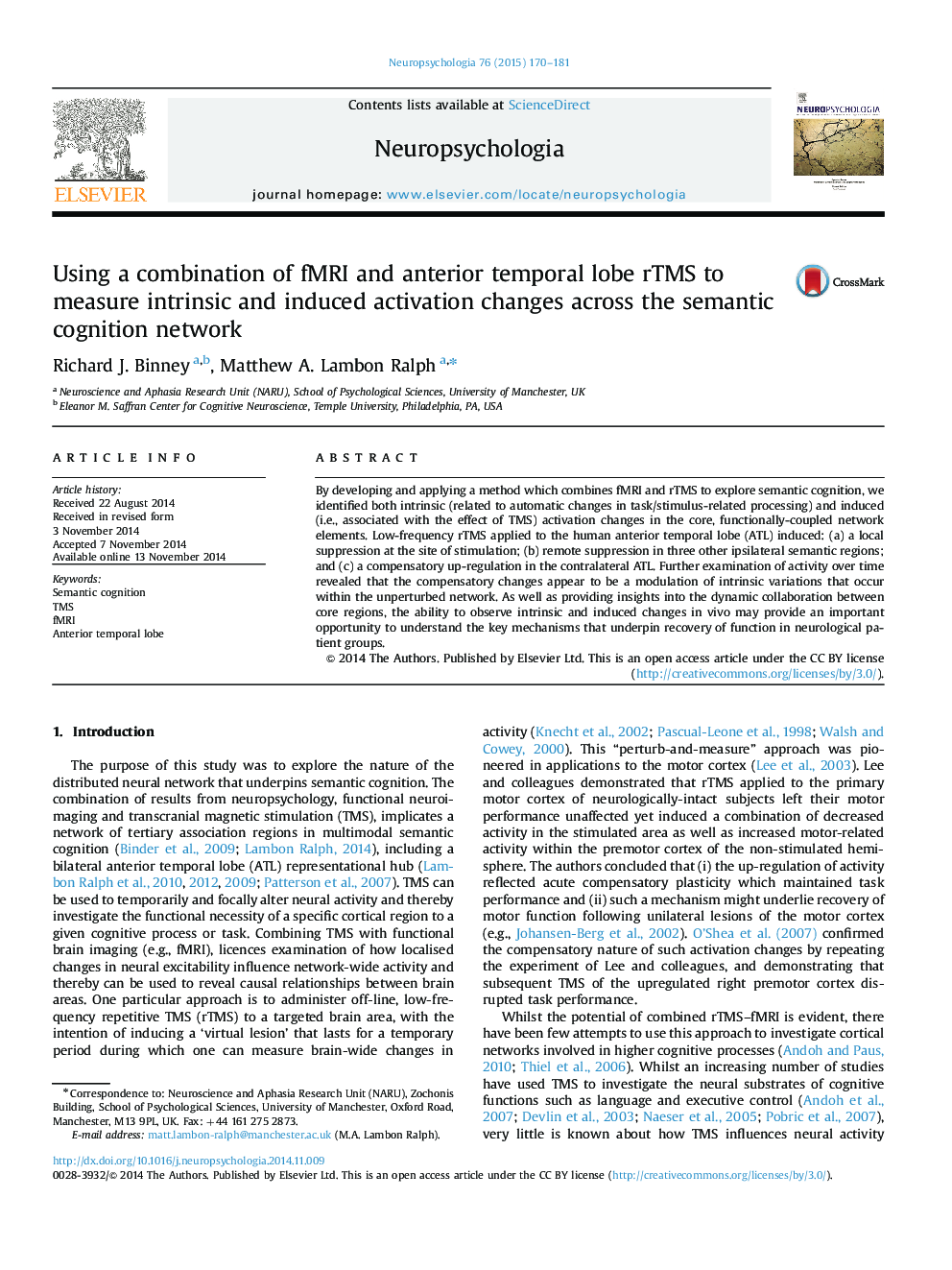| Article ID | Journal | Published Year | Pages | File Type |
|---|---|---|---|---|
| 7319760 | Neuropsychologia | 2015 | 12 Pages |
Abstract
By developing and applying a method which combines fMRI and rTMS to explore semantic cognition, we identified both intrinsic (related to automatic changes in task/stimulus-related processing) and induced (i.e., associated with the effect of TMS) activation changes in the core, functionally-coupled network elements. Low-frequency rTMS applied to the human anterior temporal lobe (ATL) induced: (a) a local suppression at the site of stimulation; (b) remote suppression in three other ipsilateral semantic regions; and (c) a compensatory up-regulation in the contralateral ATL. Further examination of activity over time revealed that the compensatory changes appear to be a modulation of intrinsic variations that occur within the unperturbed network. As well as providing insights into the dynamic collaboration between core regions, the ability to observe intrinsic and induced changes in vivo may provide an important opportunity to understand the key mechanisms that underpin recovery of function in neurological patient groups.
Related Topics
Life Sciences
Neuroscience
Behavioral Neuroscience
Authors
Richard J. Binney, Matthew A. Lambon Ralph,
